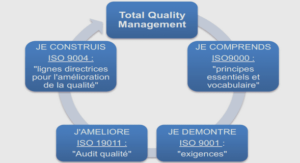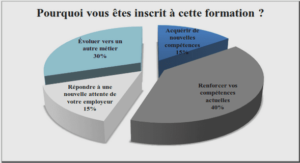Morphological and syntactic analysis of pronouns and adjectives
Methodology of Data Collection and Analysis
Data collecting
Certain sources can facilitate the study of this issue. All data are, most of the time, collected from the libraries such as the library of the English Department and the central library of Cheikh Anta Diop University, CLAD (Centre de linguistique appliqué de Dakar), IFAN. There, we can use public computer terminals to search for materials or books relating to this topic. The internet is also a global patch work, which allows us to get more information about the topic. We have gathered a lot of data collection and the cross analysis has led to process this research paper. Bibliographic references facilitate the elaboration of this issue.
Data analysis
Our study is essentially based on the strategy of commutation; all pronouns and adjectives have been identified and listed. We have taken interest in the distribution of units, that is to say their position and surroundings. In so doing, it makes things easy when comparing the two linguistic systems. To carry this work on, we are going to deal with the semantic, phonetic, morphological and the syntactic analysis in English and in Wolof. The second part of this document turns around the contrast of the two systems. Throughout this analysis, we see the similarities of the two linguistic systems and the differences of how pronouns and adjectives are built between the two languages. To highlight this topic, we put the emphasis on the difficulties for a non-native learner of English or Wolof. The final part of this writing shows the recommendations.
Pronouns and adjectives in English and Wolof
Generally, pronouns stand for or refer to a noun, an individual or individuals thing or things whose identity is made clear earlier in the text. They are a class of words which fill the position of nouns or noun phrases and which substitute for other expressions. Pronouns can be divided into subgroups such as personal pronouns, possessive pronouns, relative pronouns, indefinite pronouns, reflexive pronouns, demonstrative pronouns and interrogative pronouns.
Pronouns in English and Wolof
Personal pronouns in English and Wolof
Personal pronouns have different forms when they are used as subjects and as objects. They are a subgroup of pronouns which refer to persons either speakers or things. The subjective case is used when the personal pronoun is regarded as the subject of a verb or a predicate nominative while the objective case is used when the personal pronoun is a direct or indirect object of a verb. The treatment of inanimate objects as masculine or feminine is indicated by the choice of pronouns. The choice of masculine or feminine depends on a great deal on the speaker. Although certain nouns such as the names of machines and equipment, are usually treated as feminine in the present study, for instance, when it (a water pipe) or she gets froze I generally set fire to her. This chart shows the various cases of the personal pronouns: Subjective case Objective case I Me You You He Him 19 She Her It It We Us You You they Them Personal pronouns which stand for things or persons, change form according to their syntactic, and morphological various uses within a sentence.
Morphological analysis of personal pronouns
In English, morphology can be regarded as the formation of words that involve the morphemes. Morpheme is the minimal meaningful unite of grammatical structure. Since there are two types of morphemes such as free morphemes and bound morphemes, all subjective personal pronouns can be considered as free morphemes, for example: I watched the Bears game Monday night. I is the form used for the subject of the verb watched. It can be also called the predicative nominative. The latter is a noun phrase that occurs in a predicate and refers back to the subject of the sentence. The same is true with the other personal pronouns: the singular you and he/she/it and the plural we, you and they. Apart from the third person singular, the subject personal pronouns don’t distinguish genders. The objct personal pronouns are: me, you, us and them but the third person singular has three genders: masculine (he), feminine (she) and neuter (it), for instance, 1. She competed in the debate. 2PS V ART DEBATE 2. He bought shakes for me. PSG V SHAKES Pr O1PSG 20 Notice that personal pronouns can be characterized or distinguished by person. Thus, the first person refers to the speaker or writer (I for singular, we for plural). Second person refers to the person or people being spoken or written to (you for both singular and plural). The third person refers to the person or people being spoken or written about. We can use: he, she and it for singular and they for plural. This can be demonstrated in the chart below: Singular Plural 1 st pers. I We 2 nd pers. You You 3 rd pers. (masc.) he (fem.) she (Neut.) it They Subject personal pronouns cannot be bound morphemes because I , you, he/she/it, we and you, they are used alone without a suffix or a prefix . They are not attached to other words. When we try to segment them, we will only have consonants and vowels, which have no grammatical significance. Example: 3. We hate you. 1PP V O2PS 4. You are a good dog. 2PSG V ART ADJ DOG However, in the case of the personal pronouns, the nominative is frequently used for the objective and vice versa. This case is frequent in the Cambridgeshire ‘old English. In morphology, the third person plural can be studied in another way. The old object form of the third-person plural is frequently [əm], spelled ’em in this study. 21 Example: 5. Oh, they used to drive ’em straight them horses. Int 3PP V Par ADV PP HORSE The forms of they are also used with grammatically or semantically singular antecedents, though it is a matter of some dispute whether and when such usage is acceptable. When it is the case, they take the plural verb, but themselves with a singular sense. In Cambridgeshire, the use of the form ye is probably a continuation of an older usage. The second-person plural form ye remained the prevailing form in the nominative until the middle of the 16th century. Although the oblique form you is employed for the nominative ye recorded since the 14th century, for example, 6. I will help ye 1PSG AUX V O2PSG Therefore, the form ye survived in dialects. “ye” can be occurred for both the nominative and objective cases. It is more generally frequent in the plural and the singular forms. These forms can go together with the archaic singular forms you (subject) and you (object). Example: 7. A bottle of tea for you. ART BOTTLE Pr TEA P 2PSG Otherwise, the plural meaning of the second person is occasionally specified by the use of an appositional noun, as in the boss said, “Have you men counted your bills up?” The use of masculine and feminine pronouns referring to inanimate objects occur when the speaker takes a special interest in the object. Animals are often referred to masculine and feminine pronouns, since these may be regarded as persons or near persons, for example, 8. Have you seen that little colt lately what I bought off ye? 9. No, ain’t seen him all summer. NEG AUX PP 3PSG IND SUMMER 22 The case of masculine pronouns which are usually employed for people without regarding to sex wherever the antecedent has a general indefinite meaning and hence does not indicate sex, for instance, 10. Everybody does as he likes IND AUX COMP 3PSG V Generally, subject personal pronouns are elliptical in the imperative form. The position usually occupied is empty. However, the imperative can be marked by the subject you when it is contrasted with another person, for instance, 11. On’t take this bag. V DEM BAG 12. I keep well my bag. 1PSG V ADV POSS bag Some subject personal pronouns such as the second person singular and the second person plural “you” have the same form. From the syntactic point of view, certain subject personal pronouns are placed before the verb. However, in the interrogative form, they are positioned after the verb. The only common distinction between singular and plural you is in the reflexive and in the emphatic forms. -You and its variants can sometimes be used in a generic sense. In English, the first person plural we is used in both the inclusive and the exclusive senses. It is also used as a majestic plural. By contrast, we can be regarded as an exclusive personal pronoun when the speaker is excluded. As far as morphology is concerned, English has its own form of personal pronouns in interrogative sentences. In this perspective, there are different ways to asking questions in English. It can be started by what is called the WH-questions or by an auxiliary verb. What is more important in the former or the latter ways, is the position that a personal pronoun can take .To try to make the study clearer, let’s take the following examples: 13. -what does he do? Lan la def? 23 The remarks are particularly done with the Wolof interrogative sentences. But it is always essential to give more information starting with an auxiliary verb will-would-do-did. In English, with these cases, the personal pronouns are placed after them, which sentence transcribed into Wolof loses the personal pronoun in the written way. In Wolof, there are six forms of pronouns such as personal pronouns, possessives pronouns, relative pronouns, indefinite pronouns, demonstrative pronouns and interrogative pronouns. The two different kinds of personal pronouns in Wolof are: the subject forms which as function as subjects and the object forms. Some occur for persons and their position, others are denoted to conjugate verbs. From the morphological point of view , Wolof has several way of treating personal pronouns. On the one hand, we are going to deal with the Wolof subject personal pronouns which are ma, nga, mu, nu, ngeen, ñoom regarded as free forms. And then the bound forms are: ma-/-a/- ma, ya-/ -nga /-a /-al, mu-, nu-/-nu, yeen-/-ngeen/-leen,-ñu/-ñu. 14. Ñu degg Omar 3PP V Omar ‹They have heard Omar› 15. Dina -ñu dem Ndakaaru TAM 3PP GO DAKAR ‹We will go to Dakar› On the other hand, the Wolof object personal pronouns can be divided into two parts like strong forms (man, yow, moom, nun, yeen, ñoom ) and weak forms ( ma, la, ko, nu, léen, léen).
0. INTRODUCTION |



